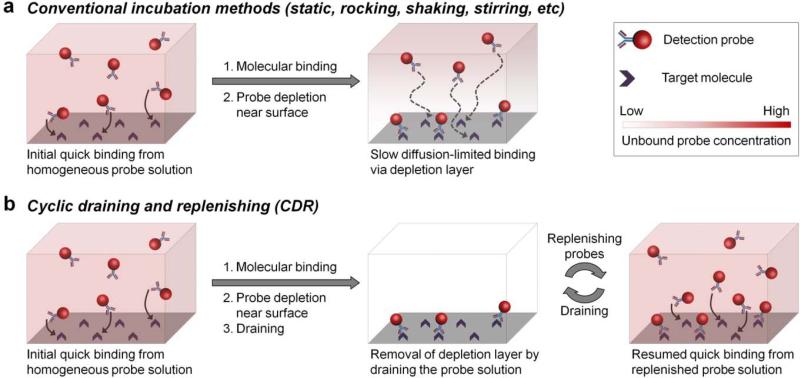Figure 1.
Schematic illustration of the cyclic draining-replenishing (CDR) technology. (a) Conventional surface-based assays typically employ static incubation for probe binding to surface-immobilized targets. As a result of fast binding kinetics and slow diffusion, probes get rapidly depleted from the volume adjacent to the surface, yielding a substantially lower effective probe concentration and limiting further target labeling kinetics by slow mass transfer from the bulk solution. Improving bulk fluid exchange by rocking, stirring, and shaking has little effect on depletion layer near the surface. (b) CDR method enables rapid target labeling by eliminating the probe diffusion limitation. The probe depletion layer is quickly removed by complete draining of the staining solution, rather than speeding up probe diffusion in the solution. Subsequent refilling of the surface with the same bulk solution keeps the probe concentration near the surface constant and equivalent to bulk solution, thus maintaining fast target labeling kinetics.

